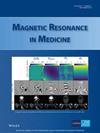Nexus: A versatile console for advanced low-field MRI
Abstract
Purpose
To develop a low-cost, high-performance, versatile, open-source console for low-field MRI applications that can integrate a multitude of different auxiliary sensors.
Methods
A new MR console was realized with four transmission and eight reception channels. The interface cards for signal transmission and reception are installed in PCI Express slots, allowing console integration in a commercial PC rack. Following standards developed by the MRI community, we implemented an open-source console software package with native Pulseq and ISMRM raw data support. It is implemented in Python to allow easy customization and provide the flexible use of a freely configurable number of transmit and receive channels. We benchmarked the system by comparing the imaging quality with a state-of-the-art reference system. Different examples of how auxiliary sensors, connected via additional channels, can improve imaging are demonstrated.
Results
Using a three-dimensional turbo spin-echo sequence, image quality of proton density–weighted and T2-weighted images in the brain of a healthy volunteer obtained by the proposed Nexus console matches closely to a commonly applied commercial system. The use of additional receive channels was demonstrated for system monitoring (radiofrequency pulses and gradient currents), electromagnetic interference detection, and temperature and B0 field monitoring. Based on these measurements, system calibrations and electromagnetic interference–mitigation techniques were applied to improve image quality.
Conclusion
Our console offers high versatility in terms of data acquisition, is freely configurable, adheres to open-source data standards, and is easy to customize. It yields a similar image quality compared with a commercially available reference system yet is substantially lower cost and open source.


 求助内容:
求助内容: 应助结果提醒方式:
应助结果提醒方式:


